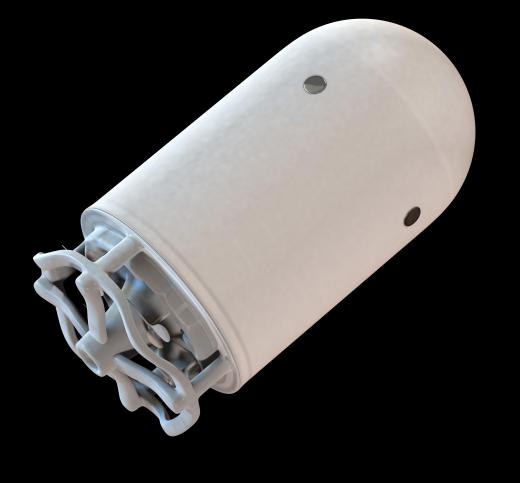What is a Nanofactory?
 Michael Anissimov
Michael Anissimov
The nanofactory is the standard proposed application for first generation molecular manufacturing, also known as molecular nanotechnology. Molecular manufacturing is a futuristic technology that would employ vast arrays of nano-level machine systems ("nanoassemblers") to synthesize macro-scale products using a process called convergent assembly. In convergent assembly, an assembly line of progressively larger manipulator arms assembles product subcomponents and passes them onto the next stage of larger manipulator arms, until finally a human-usable product is created.
Because these nanoassemblers would be stationary and work in an assembly line like a conventional factory, the danger of these nanomachines breaking loose and running wild is absent. Nanotechnology visionaries have long been worried of a backlash to their proposed technology based on fanciful science fiction stories, such as Michael Crichton's "Prey", which depict "nanotechnology" as autonomous machine swarms with self-evolving capabilities. The notion of a nanofactory provides a solid rebuttal to such disaster scenarios.

Because of scaling laws, nanofactories can be extremely productive. Macro-scale robotics systems, such as the robotics used to assemble automobiles, use manipulator arms which move very slowly by nanotechnological standards. Manipulator arms operating on the molecular level could perform assembly operations very rapidly, on the order of GHz (billions of times per second) rather than mere Hz. Preliminary calculations suggest that a nanofactory could process its own mass in mere hours.

Through advanced programming, a nanofactory would allow the user to specify the makeup of a product with atomic precision, opening up vast new sectors of the design space. Many of our current products suffer from weaknesses or imperfections because they are manufactured through "bulk chemistry"; throwing together billions or trillions of atoms in a haphazard way rather than creating products through precise atomic positioning. If a nanofactory were created successfully, it could also be programmed to produce additional nanofactories for the cost of nothing but the raw materials and the necessary programming. When nanofactories become reality (perhaps by 2015), they are likely to revolutionize every sector of manufacturing.
AS FEATURED ON:
AS FEATURED ON:












Discussion Comments
Will the nano factories be implemented at a low cost?
Post your comments